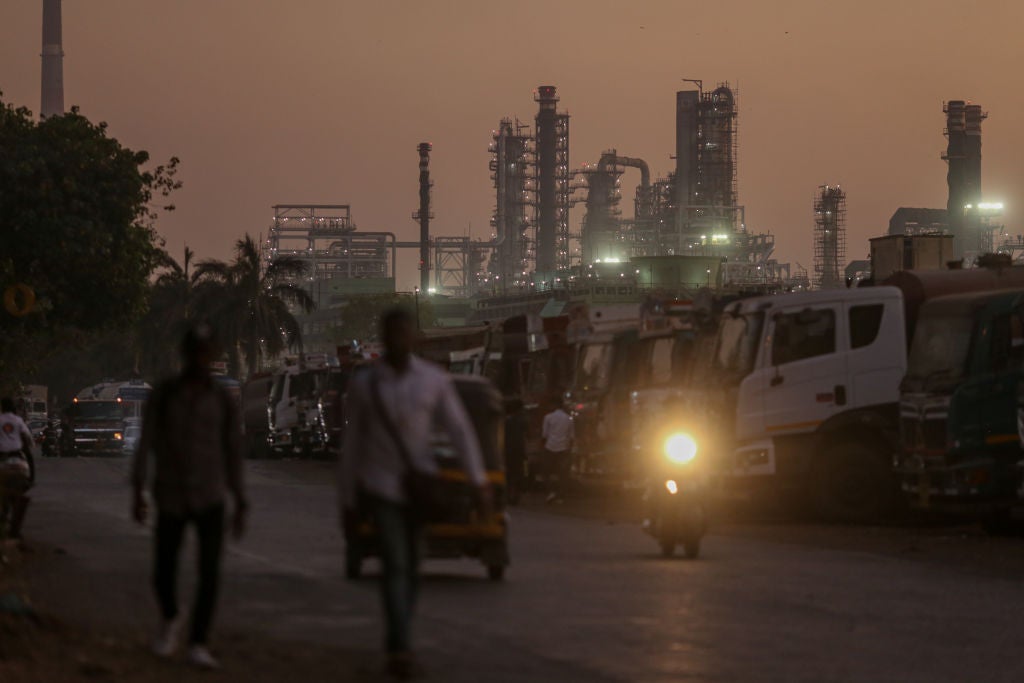
Indian government officials have been quick to defend India’s decision not to comply with Western sanctions against Russian oil, despite fierce criticism from the Ukrainian government and its allies.
In a November interview with CNN journalist Becky Anderson, Hardeep Singh Pu, India’s Union Minister for Petroleum argued that India will buy oil from wherever is cheapest, noting that EU imports of Russian oil have historically greatly exceeded India’s. “I have a moral duty to my consumer,” Singh Pu told Anderson. “We will buy from Russia. We will buy from wherever.”
In early December, G7 countries agreed a price cap on Russian crude of $60 per barrel, supplementing the EU’s import ban on Russian seaborne crude oil and oil products. Both sanctions came into force on 5 December.
Yet since Russia’s invasion of Ukraine, India – along with other countries in Asia, notably China – have capitalised on cheaper prices for oil that fewer countries are willing to purchase.
As reported by S&P Global Commodity Insights in November, China and India are now the primary destination for Russian crudes in the wake of the Ukraine war, accounting for 58% of all seaborne Russian crude exports in October. This has dented the impact of sanctions on Russia’s exports. According to the International Energy Agency’s (IEA) World Energy Outlook 2022 in late October, “Russian oil production and exports remain close to pre‐invasion levels”.
The IEA notes that Russian Urals crude has been trading at a discount to Brent crude oil, at an average of around $30 per barrel since March this year.
As such, the agency predicts that an “eastward focus” for Russia’s crude exports “sets up a battle for market share with Middle East oil exporters, which have invested both politically and financially in their relationships with key Asian oil consumers”.
Indeed, Russia has fast overtaken other suppliers of crude oil to India since the war, according to the Organization of the Petroleum Exporting Countries’ (Opec) monthly oil market report in November. Russia was the top supplier of crude oil to India in November for the fourth month in a row. According to the Opec report, Russia’s share of India’s total oil imports was 24%, compared with 22% from Iraq and 15% from Saudi Arabia.
Some have expressed concern that India’s appetite for cheap Russian oil will hamper its climate ambitions, which include a goal of reaching net-zero emissions by 2070, compared with 2050 for the majority of other countries globally.
For example, in an August article, Robert Carnell, head of research for Asia-Pacific at Dutch bank ING, argued that “Russia’s invasion of Ukraine looks to have led to backsliding in India’s already unambitious plans to achieve net-zero carbon by 2070”, as “increased purchases of Russian oil, gas and coal combined with greater domestic production and fossil-fuelled energy generation, especially coal, are clear evidence that India is moving further away from its earlier pledges on decarbonisation”.
Data from Opec reveals that demand for oil in India, currently the world’s third-largest oil consumer, has grown faster than anywhere else in 2022. Opec predicts that by the end of this year, India will have increased its oil demand by almost half a million barrels per day compared with 2021.
Yet India’s vast growth in oil demand is not a new phenomenon. In a previous monthly report from Opec, published a year earlier in November 2021 (before Russia’s invasion of Ukraine), India’s projected 2022 growth stood even higher at 8.41%, although it did not have the fastest predicted growth of all countries then, being on a par with the US and less than predictions for ‘Other Eurasia’, which was 12.7% for 2022.
Due to its fast-growing economy and population, India’s energy consumption is expected to rise dramatically by 2050. The country will need to phase out fossil fuel use and vastly scale up its renewable energy capacity to get to net zero.
India is a world leader in renewables, and at the start of this year was growing its renewable electricity capacity at a faster rate than any other major economy, with new capacity additions on track to double by 2026. By August, it had installed two-thirds of its 2022 target of 175GW of renewables. However, it is currently set to miss the overall target.
With discounted Russian oil on the table, India risks damaging its long-term ambition of reaching net zero. However, in a separate interview with CNN, speaking on high oil prices, Singh Pu insisted that India does not face a trade-off between net zero and energy security. Singh Pu claims the unintended consequences of high oil prices will in fact speed up India’s green energy transition.
“If you want to make the transition from the current position to green energy you have to survive the present,” he added.



